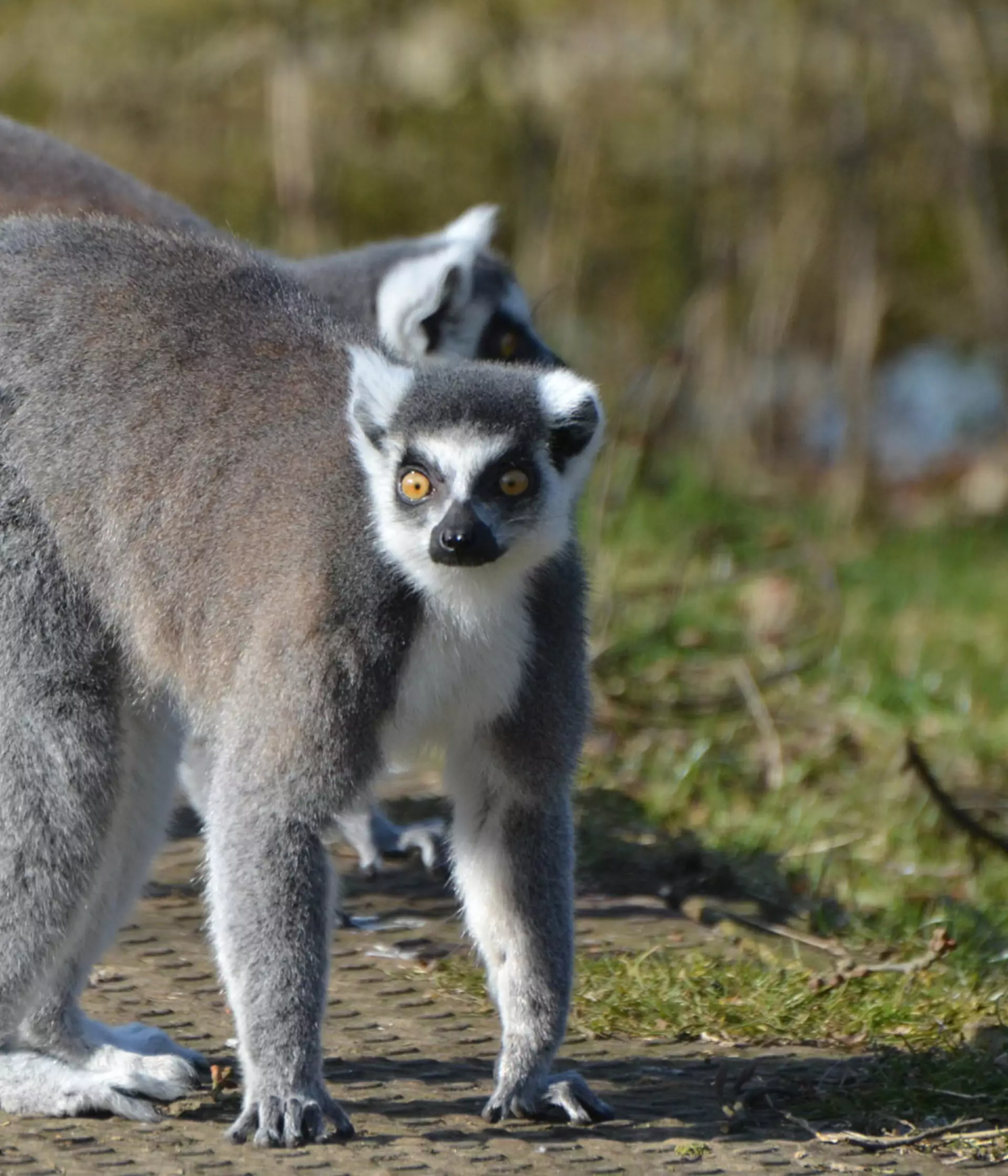How big is a ring-tailed lemur?
Cat-sized with dense grey fur, white underparts, a black face mask and an extravagant, boldly hooped black and white tail, the ring-tailed lemur is possibly the most instantly recognisable of all lemurs.
How far can ring tailed lemurs jump?
They are capable of jumping several metres from one tree to another, using their very muscular back legs to push off the tree. Ring Tailed lemurs are the only species of lemur to live on the ground more than they use trees and are predominantly active during the day.
What makes up a ring-tailed lemur’s diet?
The ring-tailed lemur’s diet consists mainly of fruit, leaves, flowers and occasionally other animal prey. Lemurs themselves are often prey to fossa where they still occur, as well as boa constrictors and eagles.
Ring-tailed lemur characteristics
Lemurs are very agile and can move from branch to branch very easily using their long tails for balance.
In lemur society, the females are dominant. Hierarchy normally breaks down during breeding season when the males compete equally for females by having ‘stink fights’. Male lemurs scent their tails by rubbing the scent glands in their wrists along their tail and then wave the highly scented tail in the direction of the rival. The one with the most noxious perfume wins the fight. Interesting fact – the scent can’t be smelt by humans.
How do ring-tailed lemurs communicate?
The ring-tailed lemurs also use their long black and white tail (which is almost twice as long as its body) as a communicator.
Its striking appearance helps them make visual signals to others. A tail raised high gives the signal ‘follow me’.
They also use smell to communicate, particularly during ‘stink fights’.
They have 22 vocalisations including a ‘meiow.’ Some vocalisations are just communication between the groups so they know where others are and some are loud alarm calls.
Are ring-tailed lemurs at risk?
Today, ring-tailed lemurs are under threat as a result of hunting, habitat destruction and microclimatic change.
The decline of lemurs has been so rapid that extinct species’ remains haven’t even had the time to form fossils but are rather known from bones and skeletons found in caves.
